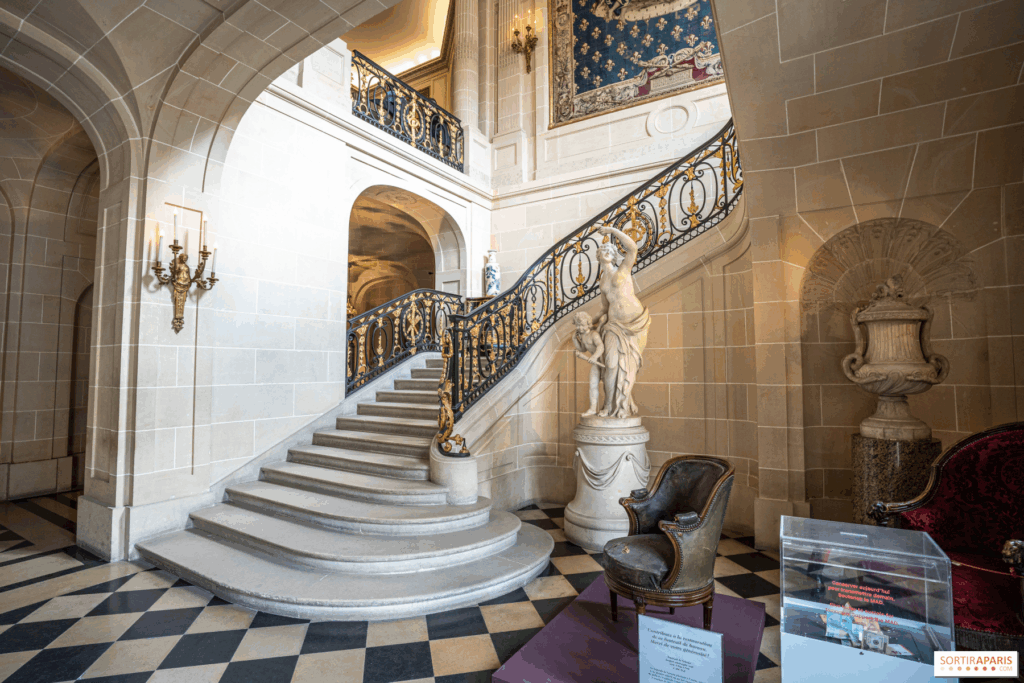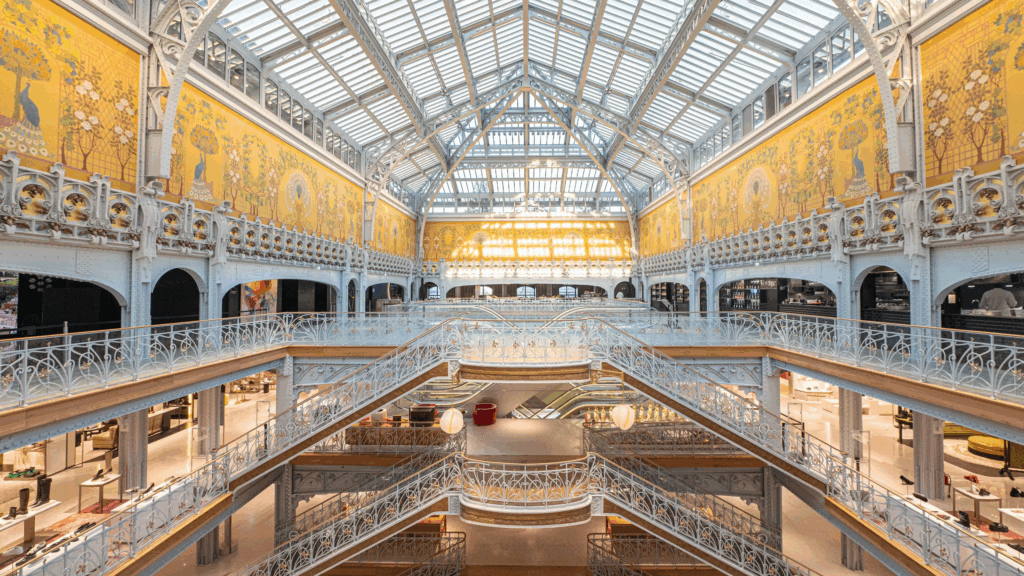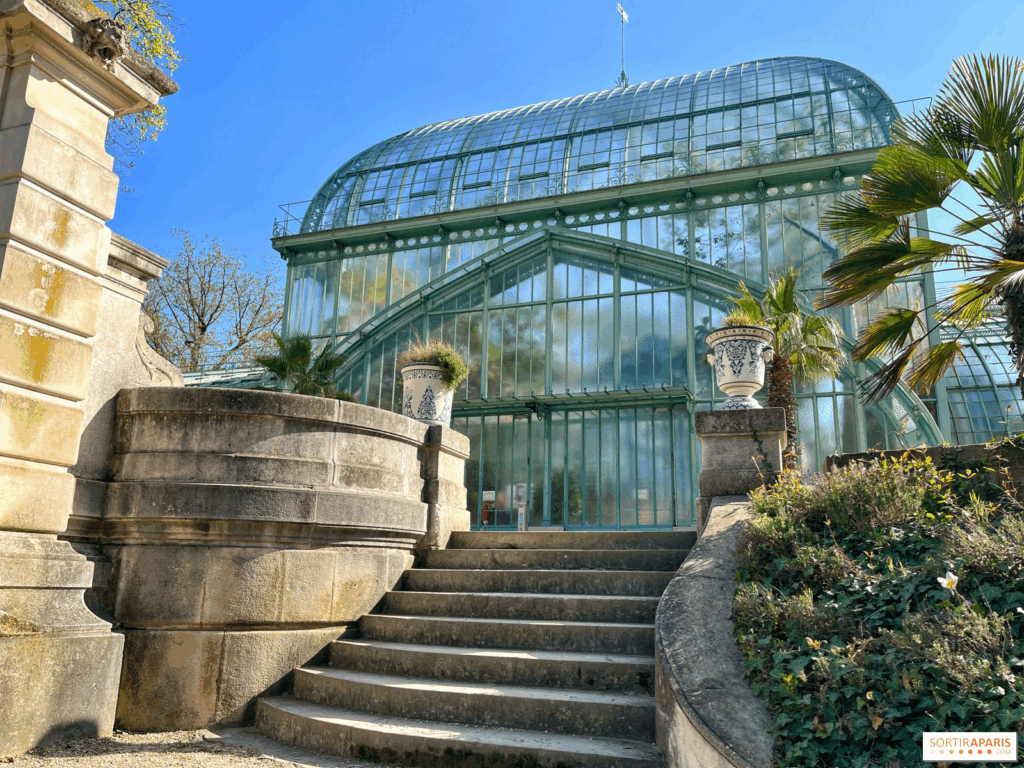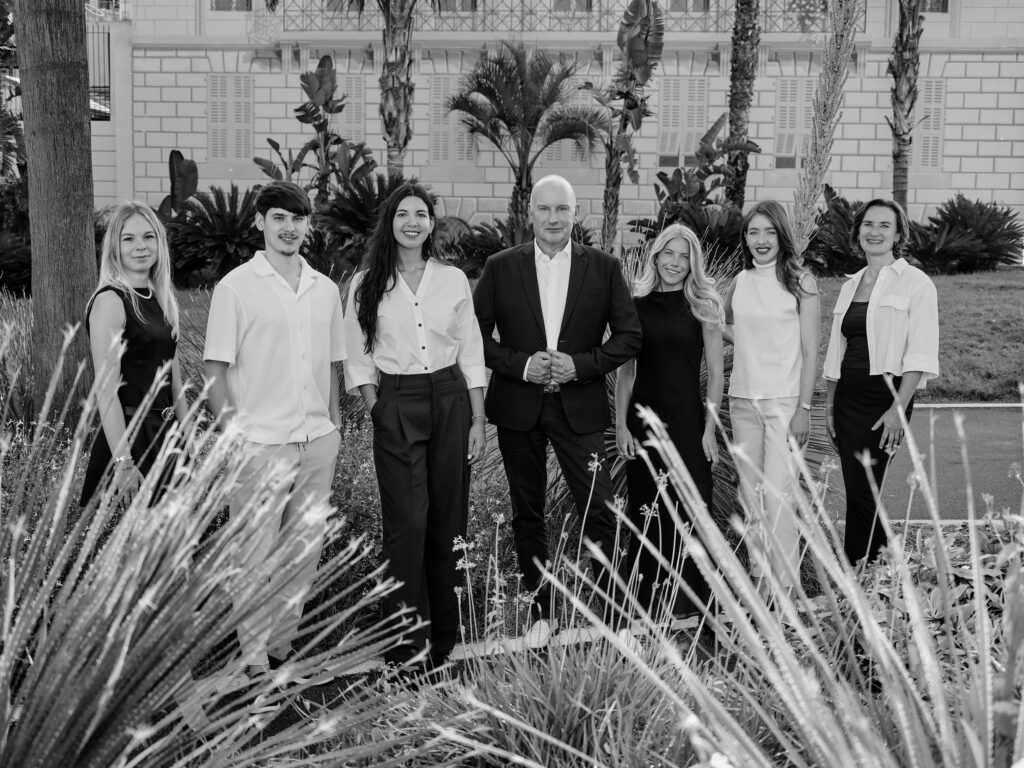Designing for the Heat: Architectural Escapes in Paris
As the Parisian air begins to shimmer with early summer heat, the city’s coolest sanctuaries don’t necessarily lie underground — they’re often found inside some of the city’s most remarkable architecture. From hushed neoclassical mansions to glass‑roofed department stores and soaring Art Nouveau museums, these spaces combine climate-conscious design with historical elegance. Let’s stroll through Paris’s most enthralling architectural cool zones — their design stories, their creators, and why they remain quietly refreshing in more ways than one.
Musée Nissim de Camondo: Neo‑Classical Cool

Image Source: Sortir a Paris
Tucked behind leafy trees near Parc Monceau, the Musée Nissim de Camondo is a time capsule of French high society. Built between 1911 and 1914 by architect René Sergent, the house-museum was modelled after Versailles’s Petit Trianon to showcase Count Moïse de Camondo’s exquisite collection of 18th‑century decorative arts.
What makes this place a cool refuge? Its dense walls, marble floors, and restrained colour palette create an atmosphere of calm — both visually and thermally. Sergent cleverly integrated hidden modern comforts: discreet ventilation, deep-set windows, and insulated interiors preserving both climate and elegance. Wandering through the grand salon, with its crystal chandeliers and teeming Aubusson tapestries, one almost forgets the urban heat outside .
Palais Galliera: Beaux‑Arts with Iron‑Frame Cool

Image Source: Time Out
A stone’s throw from the Eiffel Tower, the Palais Galliera, Paris’s Museum of Fashion, stands as a monument to late-19th-century savoir-faire. Designed by Paul-René-Léon Ginain between 1878 and 1894, it fused Palladian symmetry with a steel frame by the workshop of Gustave Eiffel .
Inside, vaulted ceilings and mosaic floors fabric‑cool in both rhythm and material. The grand salon d’honneur is flooded with daylight from high windows, its thick masonry moderating external heat. Even the furnishings — gloss-black wood, carved cornices and polished parquet — reflect light and temper the summer warmth . Essentially, Galliera’s design remains unflappable under the sun, a quiet architectural cool.
La Samaritaine: Art Nouveau to Ultra‑Modern Hybrid

Image Source: Conde Nast Traveler
Crossing into 21st-century ingenuity, La Samaritaine on Rue de Rivoli is a stunning example of architectural time-travel — marrying 1900 Art Nouveau with jetted glass futurism. Founded by Frantz Jourdain and his son Francis in 1910, it was once Paris’s most extravagant department store; now it has returned under LVMH’s hand, freshly cleaned and climate-
Here’s why it’s a summer treat:
- Glass canopy and atrium: Restored to its original scale, the stained skylight now includes electrochromic panels that adjust for sunlight, reducing indoor glare and heat azuremagazine.com.
- Rippling SANAA façade: The adjacent building, designed by SANAA (Kazuyo Sejima, Ryue Nishizawa), features a double-skin glass façade of 343 curved panels. They refract external light, create hidden airflow stacks, and blur indoor-outdoor lines
- Thermal regulation: The cavity between skins insulates thermally and integrates passive heating/cooling strategies, shielding internal communal spaces from temperature spikes
Inside, Yabu Pushelberg’s interiors are bathed in diffused light, punctuated by restored Art Nouveau staircases, gold leaf balustrades, and terrazzo floors inspired by Parisian cobbles It’s both futuristic chill and historic elegance.
Cheval Blanc Paris: A Sculptural Spa Sanctuary

Within the La Samaritaine envelope lies Cheval Blanc Paris, LVMH’s luxury hotel, designed by Peter Marino in quiet ivory tones set against warm woods. Imagine floating in a subterranean pool faced with mosaic waves, viewing an artwork-like projection reminiscent of the Seine — an ultra-cool refuge below ground level.
Set over 10 levels, the hotel’s atrium lobby, lined with Vik Muniz collages and illuminated by diffused skylight, is intentionally void of harsh angles — a cocoon of soft curves. The interiors not only evoke calm but regulate it: high ceilings, light textiles and cool marble floors form part of an ambient, soothing sanctuary .
Jardin des Serres d’Auteuil: Glasshouse Grandeur and Botanical Calm

In the western edge of Paris near the Bois de Boulogne lies the Jardin des Serres d’Auteuil, a botanical paradise that’s as architecturally fascinating as it is naturally cooling. Originally created in 1761 and redesigned in the late 19th century under architect Jean-Camille Formigé, this series of monumental greenhouses forms a sculptural ensemble of iron and glass, typical of the Belle Époque era.
The star of the site is the central palm house — a striking, curved glass structure framed in mint-green wrought iron that evokes the elegance of a conservatory at Kew or a Parisian answer to the Crystal Palace. Despite housing tropical plants, the temperature inside is carefully regulated, and the shade cast by the vast foliage provides a surprisingly refreshing environment — particularly on humid summer days.
What makes it even more special is the harmony between botanical design and classical form. Pediments, urns, and a formal parterre give it a sense of order, while the greenhouses themselves feel otherworldly — almost like a set from a Wes Anderson film.
Why Heat Demands Design
Paris’s summer temperatures — increasingly reaching low‑30s °C — test traditional masonry. But classic solutions remain effective: stone mass insulates, deep window reveals shade interiors, and central stairwells elevate air. Modern design layers glass, automation and double façades atop this wisdom, creating multi‑temporal hybrids.
These spaces, from Camondo’s neoclassicism to SANAA’s futurism, offer more than escape: they reveal how form, material and climate-thinking converge to shape our urban experience. In the battle against heat, architecture becomes our best ally.
To see more from us, our news stories and blog posts, follow the link HERE. Additionally, if you want to keep up to date with the progress of our projects, you can follow us on Instagram. We regularly post updates on our international projects!


